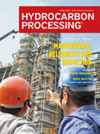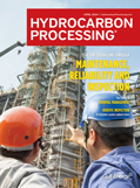Catalysts
Efficient and robust hydrogen peroxide propylene oxide (HPPO) process
Propylene oxide (PO) is an important organic building block in industry and is used to manufacture polyether polyols, unsaturated resins, nonionic surfactants and carbonates.1,2,3
Shell Catalysts & Technologies to increase pricing of catalyst products globally
Shell Catalysts & Technologies (SC&T) announces a global price increase of its refining and chemical catalyst products lines.
How digitalization is turning data into value in the heart of the refinery: FCC catalysts
Digitalization has impacted the world of refining for the past several decades.
Albemarle announces launch of Ketjen Corporation
Albemarle Corporation, a leader in the global specialty chemicals industry, announced the official brand launch of Ketjen, its wholly owned subsidiary that crafts tailored, advanced catalyst solutions for the petrochemical, refining and specialty chemicals industries.
A novel deep catalytic cracking technology for residue-to-chemicals processes
Over the past two decades, annual global demands for refined products and basic petrochemicals have increased by approximately 1.3% and 3.5%, respectively.
Refinery catalyst selection: Facts and fictions every refiner should know
Most refiners carefully evaluate their refining catalysts to ensure maximum benefits over the catalyst cycle length.
Development/industrial application of FCC catalyst for boosting high-octane gasoline production
Globally, crude oil is trending toward being heavier; the proportion of heavy crude oil reserve is expected to be 50% of the entire recoverable oil reserve moving forward from 2020.
Flexibility in catalyst technology for improved bottoms upgrading
Bottoms product from fluidized catalytic cracking (FCC) is typically one of the least valuable products from a refinery.
Innovations
N’GENIUS Materials Technology has developed a new series of high-strength austenitic stainless steels that the company says will transform how materials are specified and utilized across the oil and gas sector.
Partners maximize profitability during the pandemic
The COVID-19 pandemic can be viewed as one of the most challenging periods in the history of the oil and gas sector. Refineries worldwide faced difficult times operating at their turndown capacities or even temporarily shut down units at the refinery.

- bp’s Cherry Point refinery turns feedstock into renewable diesel fuel. Here’s how. 5/7
- Heavy oil shortages are driving up refiners' cost 5/7
- U.S. West Coast refinery demand for hydrogen increasingly met by merchant suppliers 5/7
- BASF invests in capacity expansion of Basoflux® range of paraffin inhibitors in Spain 5/7
- Shell in talks to sell Malaysia fuel stations to Saudi Aramco 5/7
- India's fuel demand increases more than 6% y-o-y 5/7




